Dr Tom McGinley: remembering a man of true vision
and live on Freeview channel 276
All sections of the community, both north and south, medical, political and ecclesiastical, have created a wave of remembrance. This outpouring is especially felt by the many thousands of relatives of patients who experienced the amazing care, physical, mental and spiritual, that their loved ones had received during their last days of life. A loving blanket of warmth was wrapped around them by Dr Tom and his staff. They all felt safe in the embrace of the Foyle Hospice. Tom may have gone, but his spirit lives on in the staff who continue going that extra mile.
Every great project starts with a ‘thought’, ‘a feeling’, a ‘dream’, if you will. How many have the driving force, the steely determination, as well as the time and energy, to make that vision come true? Tom was one. Nothing stopped him until that reality was seen in all its fullness.
Advertisement
Hide AdAdvertisement
Hide AdThe original challenge was triggered when, as a GP in the 1960s, while treating a young man, Michael Donaghy, terminally ill with bone cancer, he realised the inadequacies of treating patients in pain who were close to death and at home.
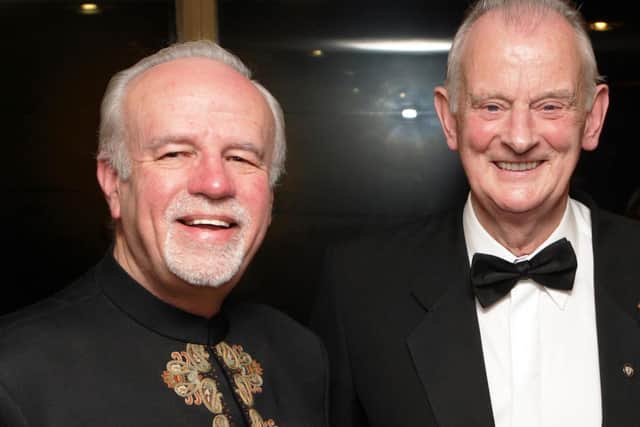

Palliative care had not yet advanced to a high degree. This niggled him and sank into his soul. “I must learn about pain and how to control it!”, he said. While still working as a full-time GP, he decided to study anaesthetics. In 1978, he was awarded a Fellowship in Anaesthetics.
The second trigger was during the summer of 1983. He was coaching ladies for the first Foyle Female Five mini-marathon, when he read in the ‘Belfast Telegraph’ that money was being raised in Derry for the Northern Ireland Hospice. That night, he announced to the ladies, “We need a hospice in this area and we need it now. Fund-raising in a big way is imperative.”
A small steering committee was started by Tom and myself and others in the autumn of 1983. The goal was to raise £500,000.
Advertisement
Hide AdAdvertisement
Hide AdLittle did we know then that, by the time the Inpatient Unit was open in 1991, we needed about £1,200,000.
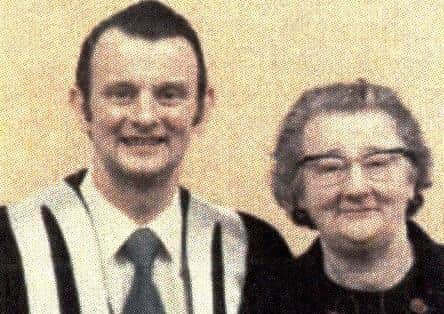

Premises for a Home-Care Centre were purchased for £30,000 in Crawford Square in March 1985. Our first two marvellous hospice home-care nurses - Hannah Walsh and Rosemary Houston - began their work.
General Practitioners in the city gave their whole-hearted support to this new service which grew rapidly. Fund raising accelerated. The response was astonishing.
The next challenge was to build an Inpatient Unit with ‘back-up’ beds for the essential service which was home care.
Advertisement
Hide AdAdvertisement
Hide AdIn total, more than ten sites were viewed. Some had been generously offered. Others were carefully looked at. Tom felt strongly that the new Foyle Bridge should become the logo for the hospice and must be built within its view.
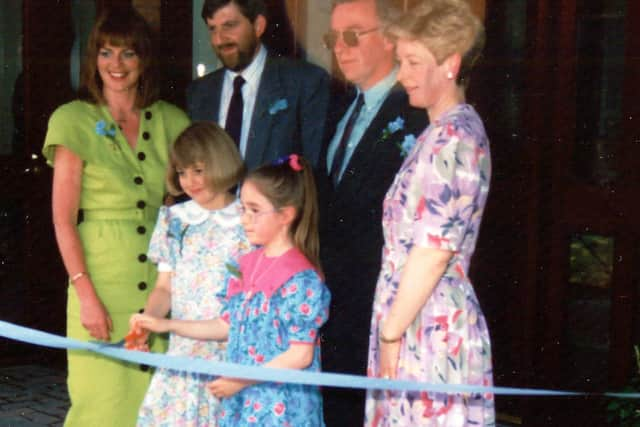

After all, he said, we are assisting patients and their families to walk over a number of bridges. The first, and most important, was the bridge between this life and the next. Another involved overcoming deeply held prejudices, that of crossing the political bridge between north and south as well as the religious ‘divide’.
One Protestant group was looking for reassurance that it would not become too nationalist while a Catholic priest arrived at Tom’s home one evening to bring a message that the hospice must be Roman Catholic in nature. The first was reassured and the second was asked to leave.
Finally ,Tom found that the ‘Orange Field’ was up for sale on the Culmore Road with a most beautiful view of the Foyle Bridge. He and I stood there looking at it, knowing that ‘this was it’. Then he said, “Keith, how on earth can I, a West Donegal, Irish-speaking ‘blow-in’ ask the loyal Orange Order of Derry if we can buy their field?” He was genuinely concerned. He turned to me and said, “Are you a Protestant Baha’i or a Catholic Baha’i?” I replied, “Neither, my Faith believes in the unity of all the Great Faiths of the past. Why not go as a Christian?” So he did, and, as we say in Derry, ‘no bother!’
Advertisement
Hide AdAdvertisement
Hide AdPrior to the triumphant goal of opening, another challenge arose. Who would cut the ribbon? Could we ask a politician, a church leader, someone famous?
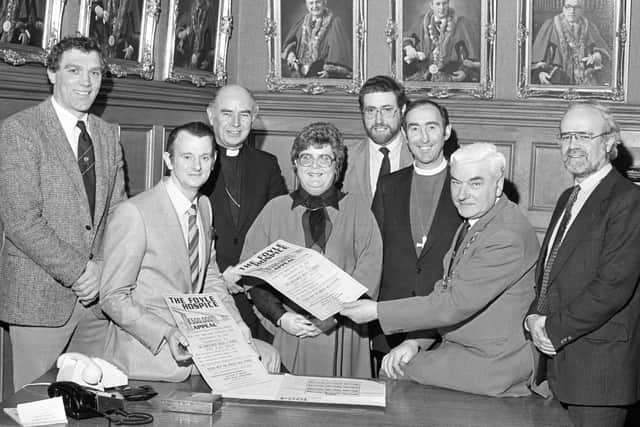

The answer was a firm no. Suddenly the perfect solution came. Why not invite two children, one a Catholic and the other a Protestant, whose mothers had died from cancer? That worked.
On that sunny and warm day, the dream was realised in front of many guests from very strand of society. It merits mentioning some of the words that were said that day, in particular those of Tom.
As ‘MC’, I said: ‘We not only thank the community but all those who have given so freely of their time and effort. We take this opportunity to pay special tribute to Dr Tomás for that vision he had so long ago, the fruits of which now stand before you.”
Advertisement
Hide AdAdvertisement
Hide AdTom then took to the lectern and said: “A Cháirde. I would like to welcome you all here on this historic day, on this historic site... I was brought up in West Donegal on a philosophy that we are all on a journey, and that death is but part of that journey. My thoughts all day have been with that wise lady who introduced me to that philosophy [his mother].
“First, I would like to thank the Orange Order for selling us this site (applause). There is no truth, however, that I became an honorary member of the Orange Order (laughter). We are delighted that this programme is going out live on Radio Foyle, and I would like to take this opportunity to thank all those people who can’t be here today and who have supported us over the years.”
Since that auspicious occasion, the hospice has grown. The virgin gardens have bloomed more beautifully each year. In 2002, a new Day Centre was opened onsite, expanding services yet again. The fund-raising centre was also on-site, headed by Ciaran McGinley, Tom’s son.
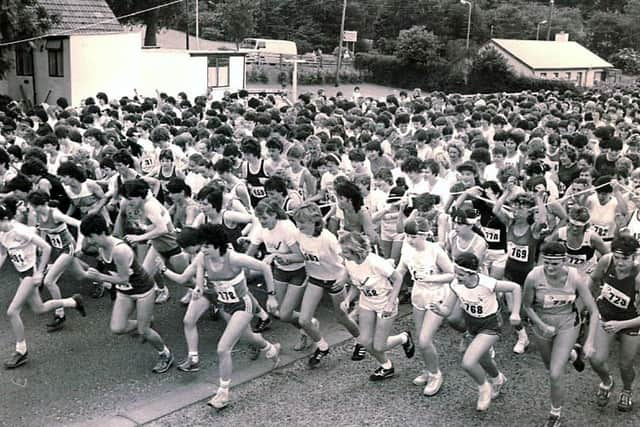

Towards the end of 2010, Dr McGinley felt that, due to health reasons, he must step down from his role at the hospice. The Board reluctantly accepted his decision and fully appreciated his reasons.
Advertisement
Hide AdAdvertisement
Hide AdTom had dreamed a dream. He had become its driving force. He had been Medical Director, Chairman of the Board as well as acting as CEO. History had been made, his accolades well earned. Tom had been awarded a Papal Knighthood for his work, received the Freedom of the City, as well as many other awards.
More than all of these, however, are the precious thoughts and prayers of those many thousands of patients and families who, over decades, have benefited from the services of a dream come true.
In his poem, ‘‘Ulysses, Alfred Lord Tennyson, ends with the following line:
“…To strive, to seek, to find, and not to yield.”
Tomás, the man from West-Donegal, gave us a dream.
He has left us now, but the dream lives on.
We, the community, will never let that dream fade.
It lives for ever in our hearts and in our heads.
○ Dr Keith Munro is a retired GP and one of the founders of the Foyle Hospice.